Central Australia, is a vast arid region in the centre of the continent. Often referred to as the Red Center, is an ancient world of the dusty red desert, endless blue sky, wicked rock formations and weird and wonderful creatures that live among this stark landscape. With summer temperatures reaching the high 40s, and months without rain, this land is not for the faint-hearted.
This remote region is home to the township of Alice Springs, the MacDonnell Ranges, Kings Canyon in Watarrka National Park, and its most iconic points of interest: the unforgettable monoliths of World Heritage-listed Uluru-Kata Tjuta National Park.
There are no better places to explore the landscape and wildlife of Australia‘s Red Centre than the majestic Uluru – the iconic sandstone monolith and a must-see for any Australia Bucket List.
We visited the area as part of our month-long wildlife watching road trip across Australia and spent about a week exploring Uluru-Kata Tjuta National Park. Combined with a trip through the West McDonald Ranges and the Old Andado station on the edge of the Simpson Desert, it was the perfect introduction to the dramatic landscape of Central Australia and the weird and wonderful creatures that inhabit it.
READ MORE: 50 Outstanding Safari Holidays Destinations Outside of Africa
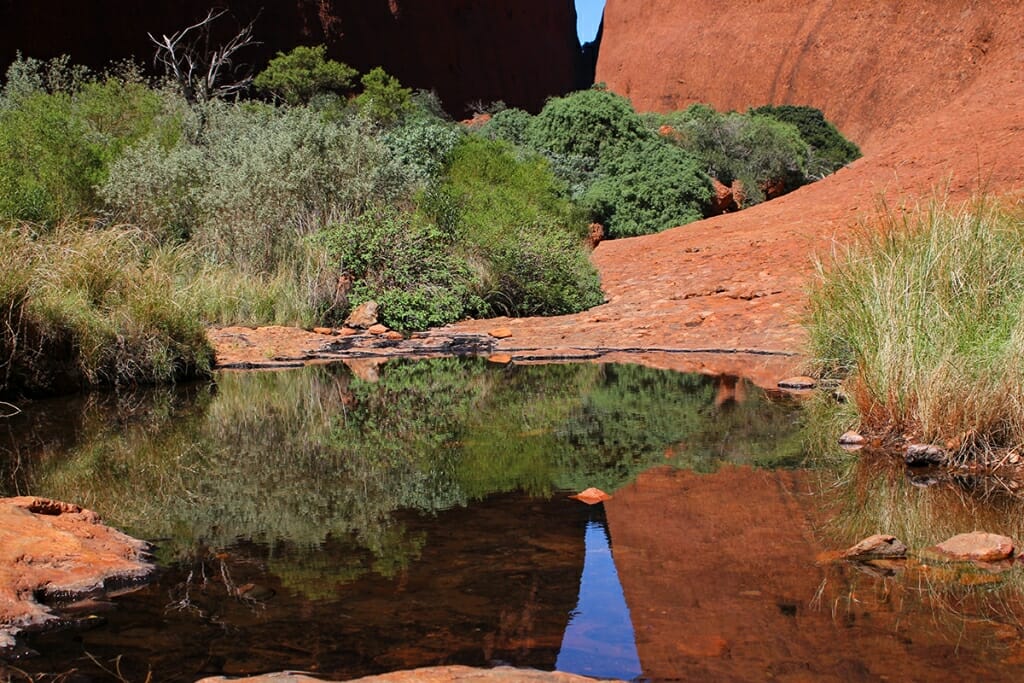
Uluṟu – Kata Tjuṯa National Park
After a long drive from Coober Peddy in South Australia, we arrived at Yulara, the service village and the base for exploring the Kata Tjuta National park. We were very keen to spot some of the Uluru wildlife and were thrilled to find multiple rodent tracks on the dunes surrounding the campsite.
Stretching across more than 325,000 acres in the Australian desert outback, Uluru-Kata Tjuta National Park is home to two iconic rock formations – the Uluru and Kata Tjuta, also known as the Olgas.
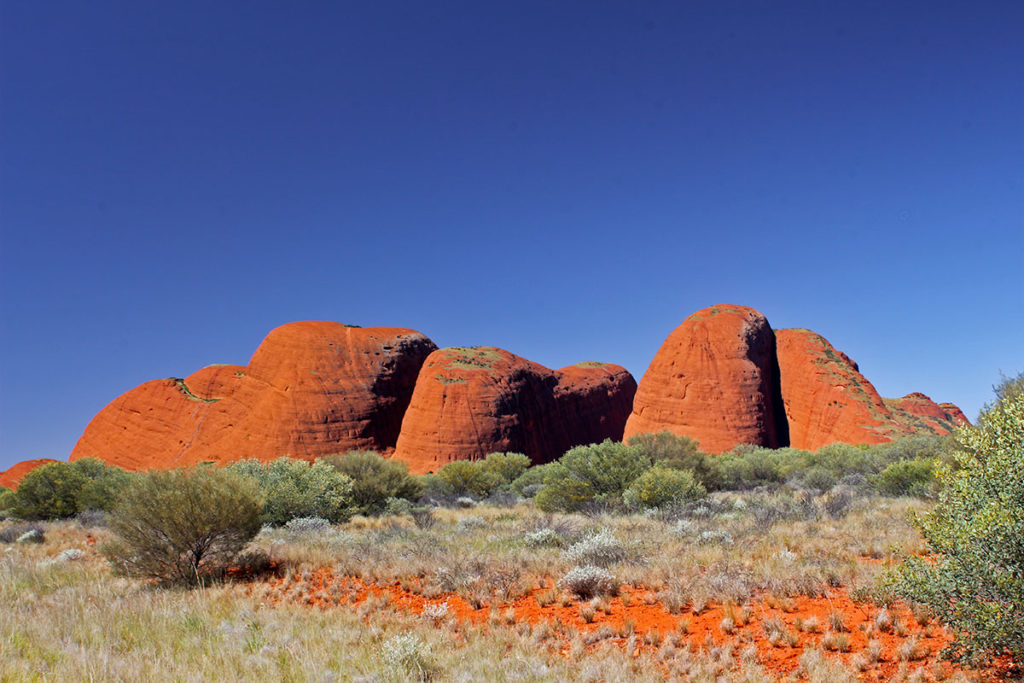
Uluru or Ayers Rock is a World Heritage Site. It is the most famous landmark in Northern Territory and in all of Australia. The sandstone giant is 348 m high with a total circumference of 9.4 km. However, as tall as Uluru appears, what we are seeing is just the top of an iceberg – most of Uluru’s bulk lies underground.
The Rock is known for its ability to change colour depending on the time of the day and the angle of the sun. In the late afternoon, it practically glows dark red, towering over the surrounding landscape.
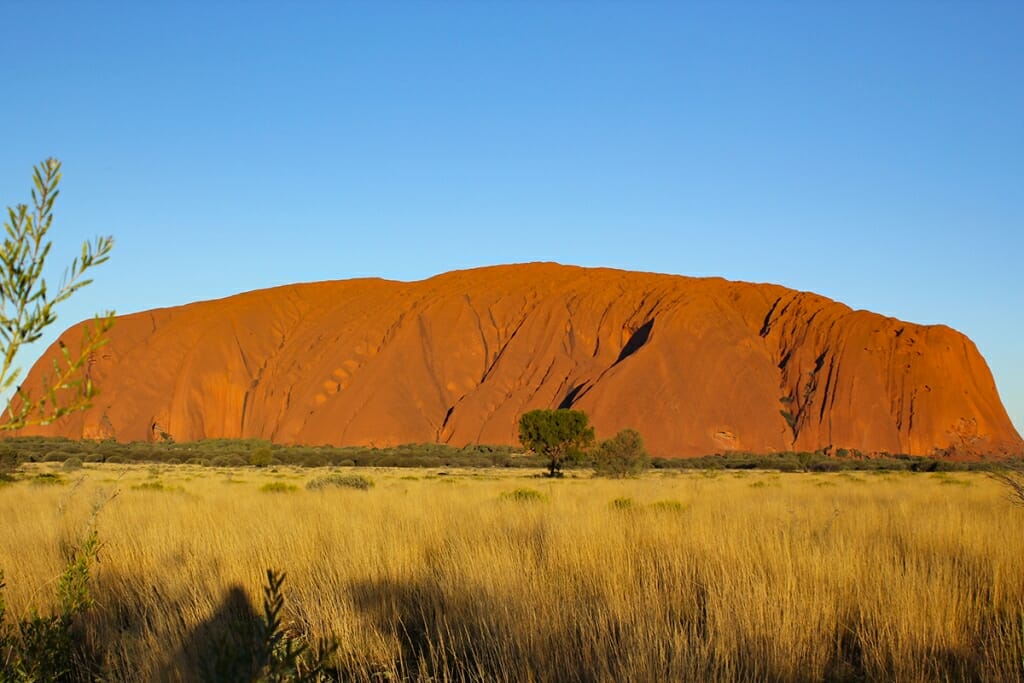
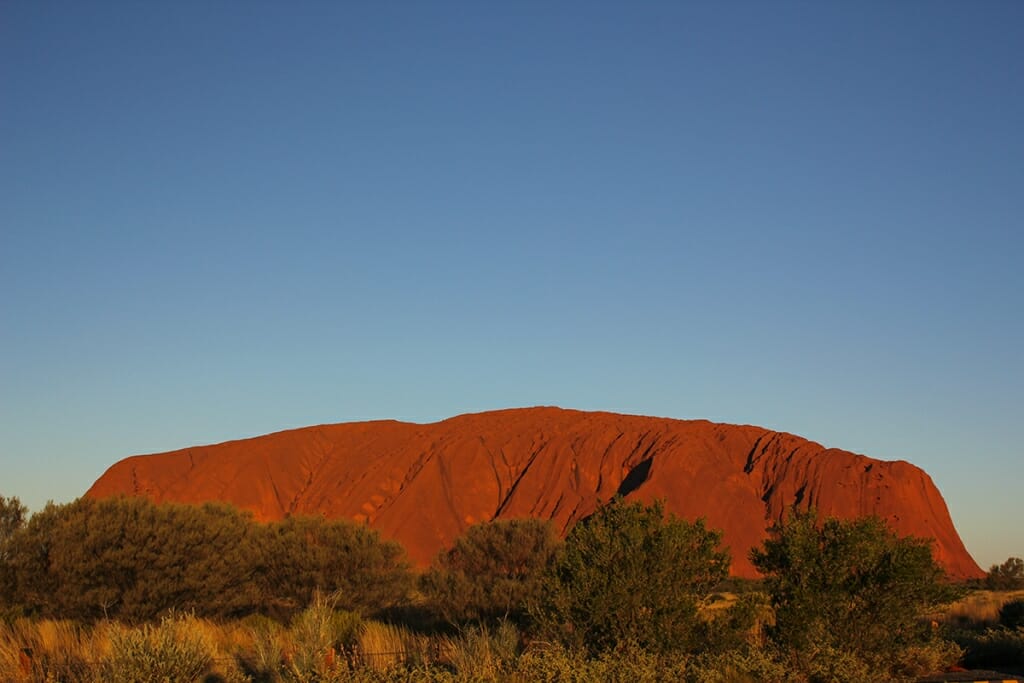
Some interesting facts about Uluru
Whre is Uluru?
Uluru lies right in the middle of Australia. It is part of Uluru – Kata Tjuta National Park. The nearest town to Uluru is Alice Springs, 430km away.
How was Uluru formed?
The rock was originally sitting on the bottom of an ancient sea.
How tall is Uluru?
It is taller than the Eiffel Tower and the Chrysler Building.
How old is Uluru?
Uluru is estimated to be 600 million years old
What animals live at Uluru?
Uluru is home to Red kangaroo, dingo, spinifex hopping mice, horses, camels, the magnificent thorny devil and many other reptile species and well as a variety of bird species.
Why is Uluru sacred?
The land surrounding Uluru belongs to the traditional custodians of the land – the Anangu people, to whom Uluru and the surrounding country is the living, breathing, cultural landscape. According to the Anagu people, Uluru was formed by the Ancestral beings in the Dreaming, which is the term that represents the time when the Ancestral Spirits created life and the physical landscape we see today. The sacred caves around the base of Uluru are important ceremonial sites for Anagu people.
Is climbing Uluru allowed?
No. The climb was formally closed on 26 October 2019. Because Uluru is a site of high cultural and spiritual significance to the Anagu people – the traditional owners of the land, climbing it for fun is not culturally appropriate for the people who lived in the area for tens of thousands of years. There plenty of other ways to explore the iconic landmark, like the 9.4km Uluru Base Walk.
Why was Ayers Rock changed to Uluru?
When the first European explorer to see Uluru, William Gosse laid his eyes on the amazing monolith in 1873, he decided to name it Ayers Rock after Sir Henry Ayers, premier of South Australian government at the time. The name of the rock was changed from Ayers Rock to Uluru in 1995, 10 years after the Australian government formally returned ownership of Uluru to the traditional custodians of the land – the Anangu people. The change of the name is a mark of respect and recognition of Anangu people as the traditional owners of the land.
What is Kata Tjuta
Also known as the Olgas, Kata Tjuta is a series of 36 monoliths, the highest being 548 meters tall
Uluru Animals
Despite lying in one of Australia’s most arid regions, Uluru-Kata Tjuta National Park is home an incredible variety of unique Australian wildlife species, including 21 species of native mammals, 178 species of birds and 73 species of reptiles. Spotting these desert specialists may take a little patience and ‘know-how’, but it will certainly be worth it.
Birds at Uluru
Flocks of Zebra finches can be seen at almost any waterhole. Black-faced woodswallows and Little woodswallows are constantly on the move chasing insects.
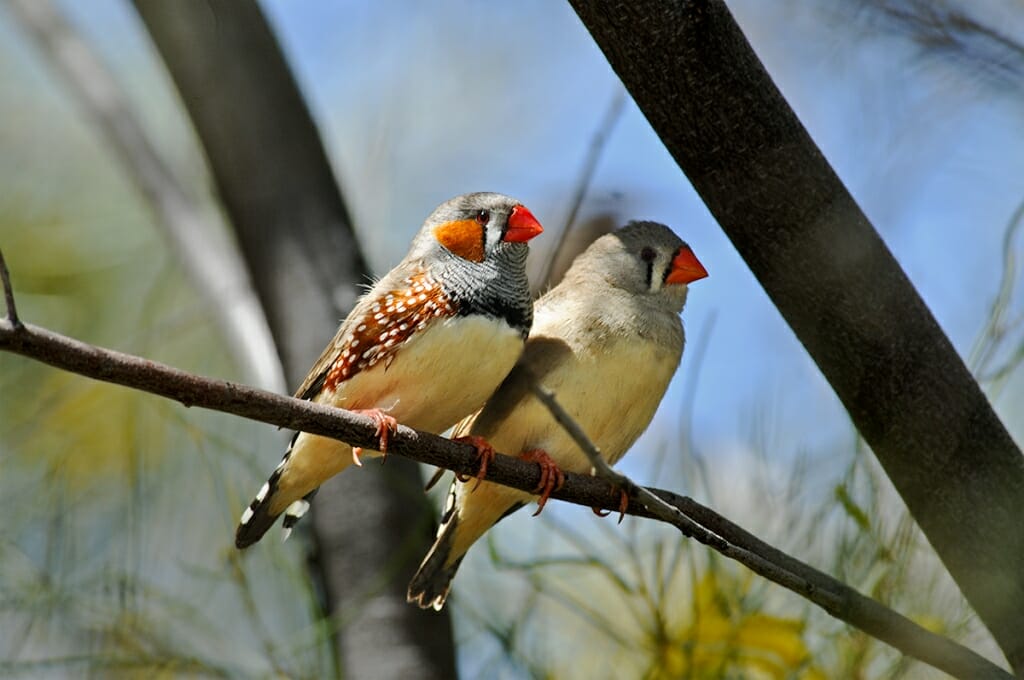
White-plumed honeyeaters and Grey-headed honeyeaters are searching for sweet nectar up in the trees while the adorable Mistletoebird faithfully pollinates mistletoes. Spinifex pigeons are also quite common around the rocky formations, and budgies are a common site.
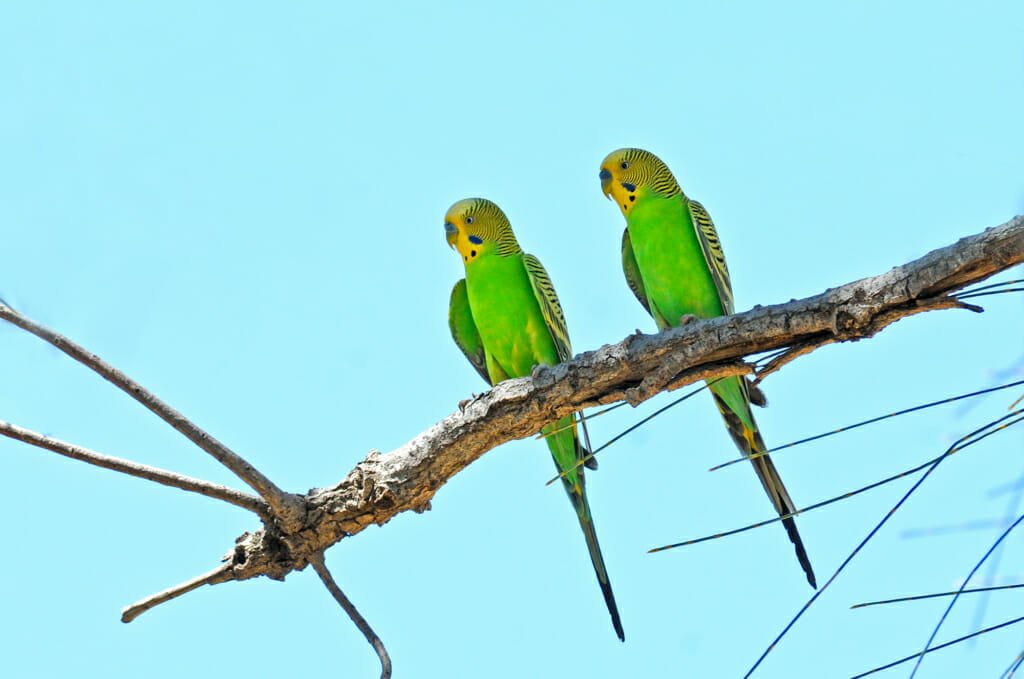
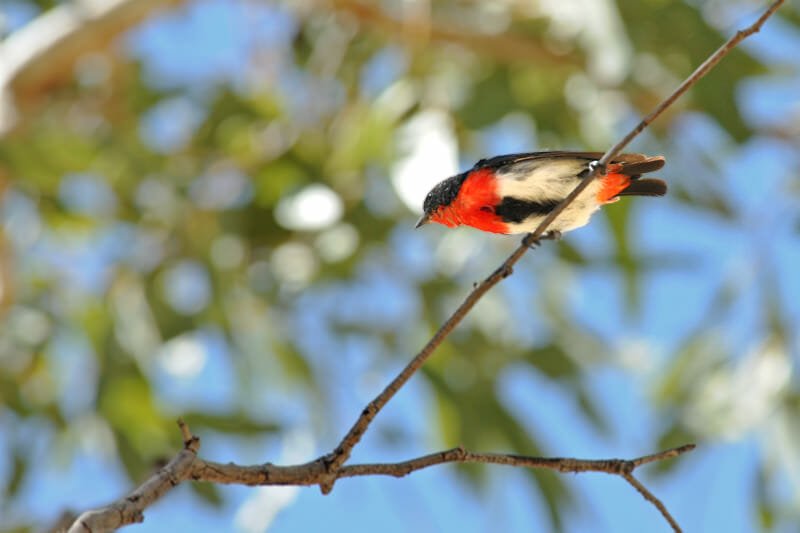
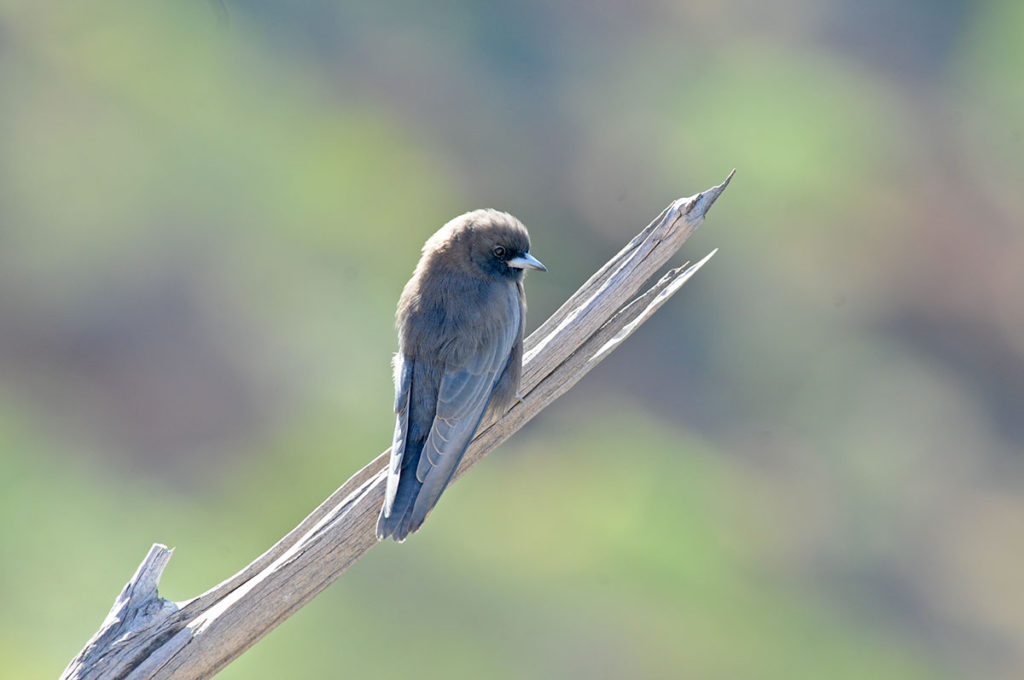
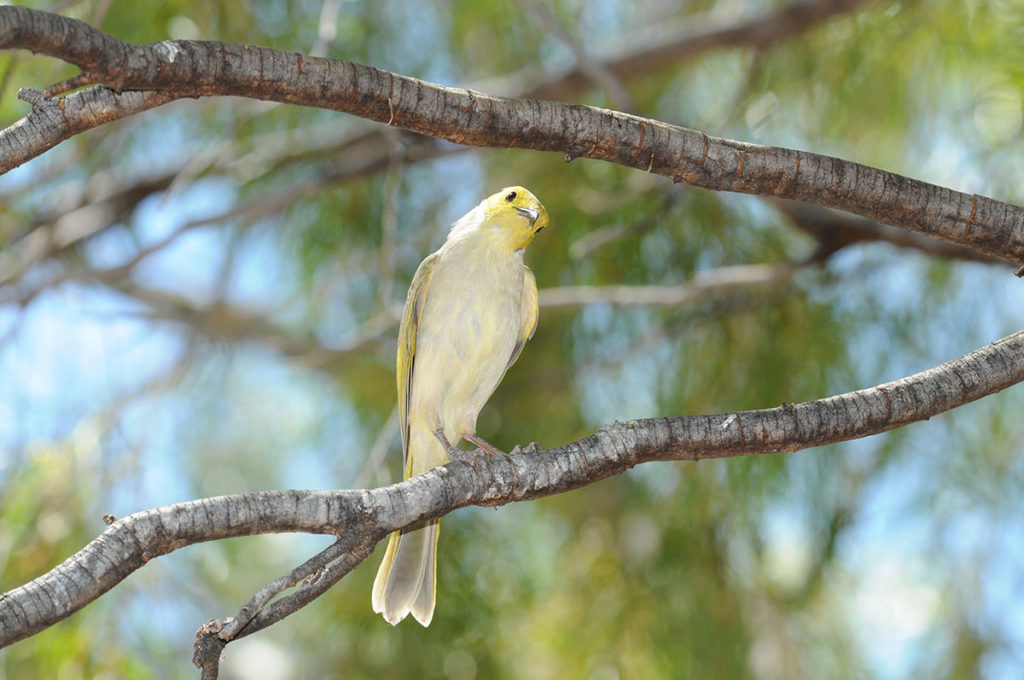
Hopping mouse at Uluru
As the darkness approaches, it is time to start searching for those elusive mammals. The Uluru viewing platform is a good place to start. As soon as the sun sets and the Rock is engulfed by darkness, Spinifex hopping mice, Sandy inland mice and the feral House mice all come out to feed on the bounty of crumbs left from the day’s tourist activities.
Hoppies are one of the cutest Uluru animals and they can be approached quite closely. To find them, all you have to do is wait for most visitors to leave the car park, turn on your torch and walk along the hedge line separating the pavement from the bush.
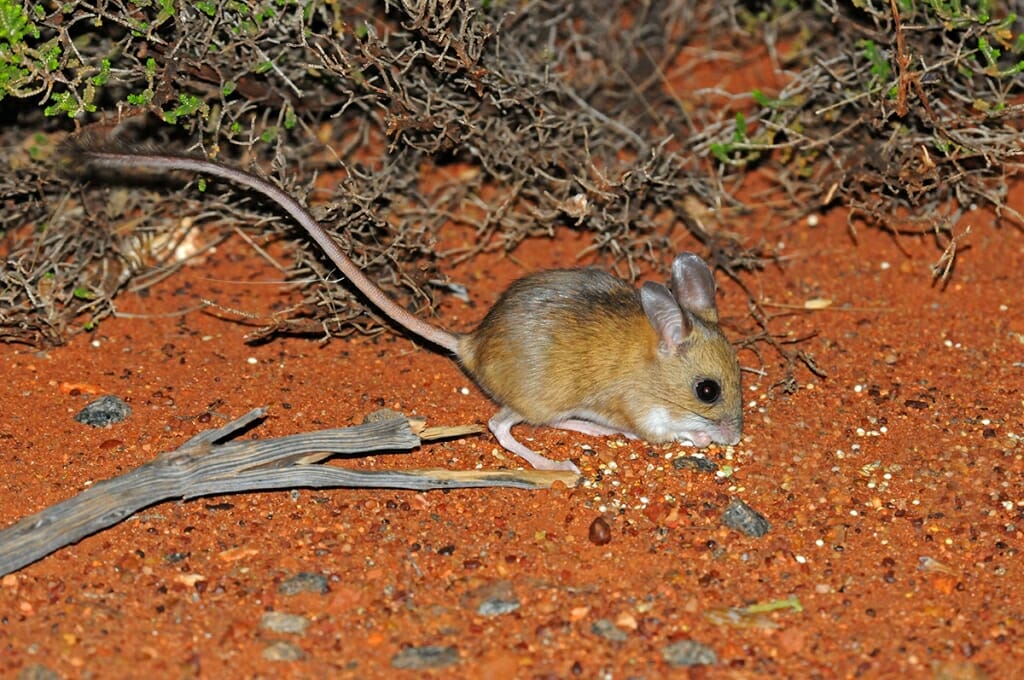
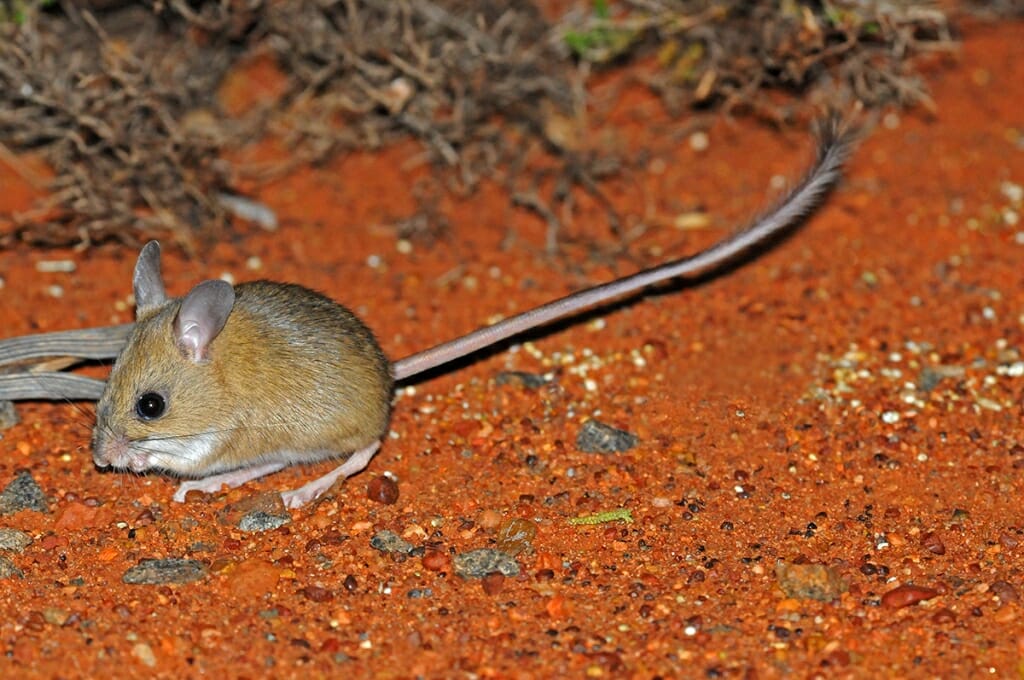
Dingo at Uluru
Dingos are not very easy to see at Uluru, but they are certainly present in the area. We spotted a single dog driving between Sturt Highway and Uluru.

Red Kangaroo
The one animal you won’t have much trouble finding around Uluru is the Red Kangaroo. The Kangaroo is as Australian as it gets – it is even featured on the Australian coat of arms, along with an Emu. And in my view, Red kangaroos are the most magnificent of all kangarro species we have in Australia.
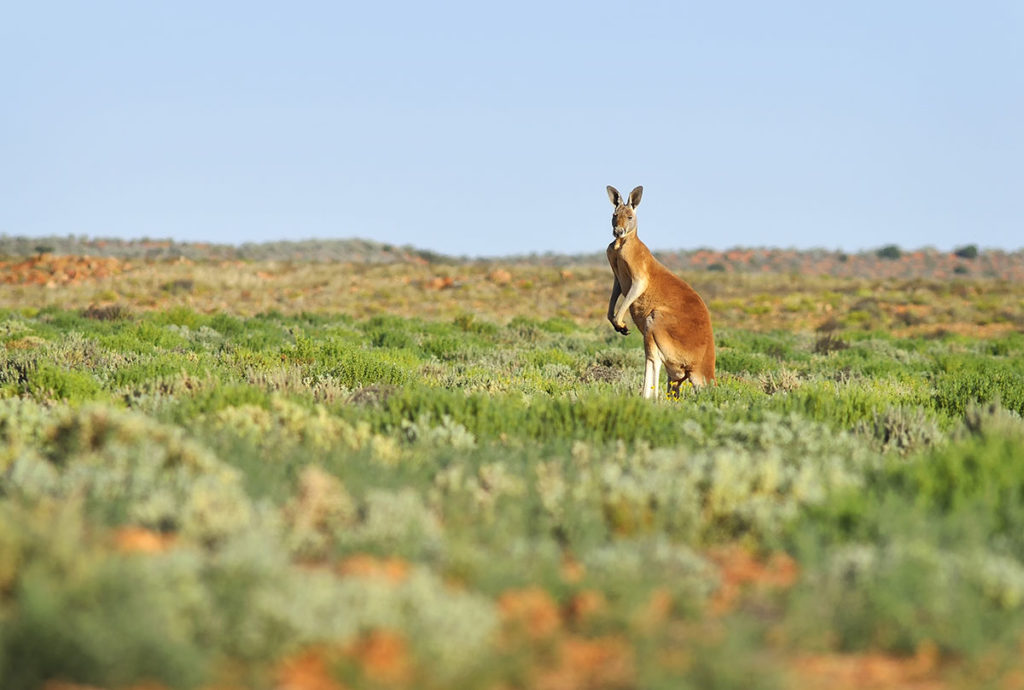
Bats at Uluru
The Uluru camping grounds is also a good place to see all three rodent species. A corrugated iron shack not far from the camp is home to a few Broad-nosed bats. As with most Australian landscapes, night time is the best time to spot Uluru animals.
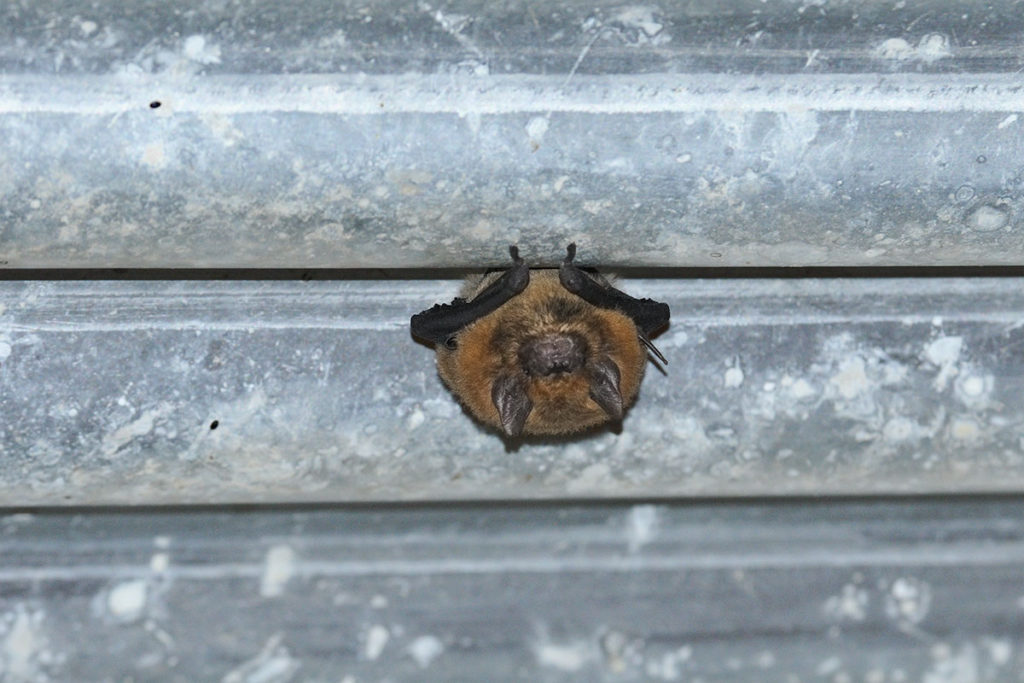
Brumbies and Camels at Uluru
In terms of the more recent arrivals, there are Brumbies and Camels at Uluru that arrived in Australia with the European settlers. Because of their large size and because they are active during daylight hours (unlike most Australian mammals) over the years, horses and camels became some of the most recognized Uluru animals.
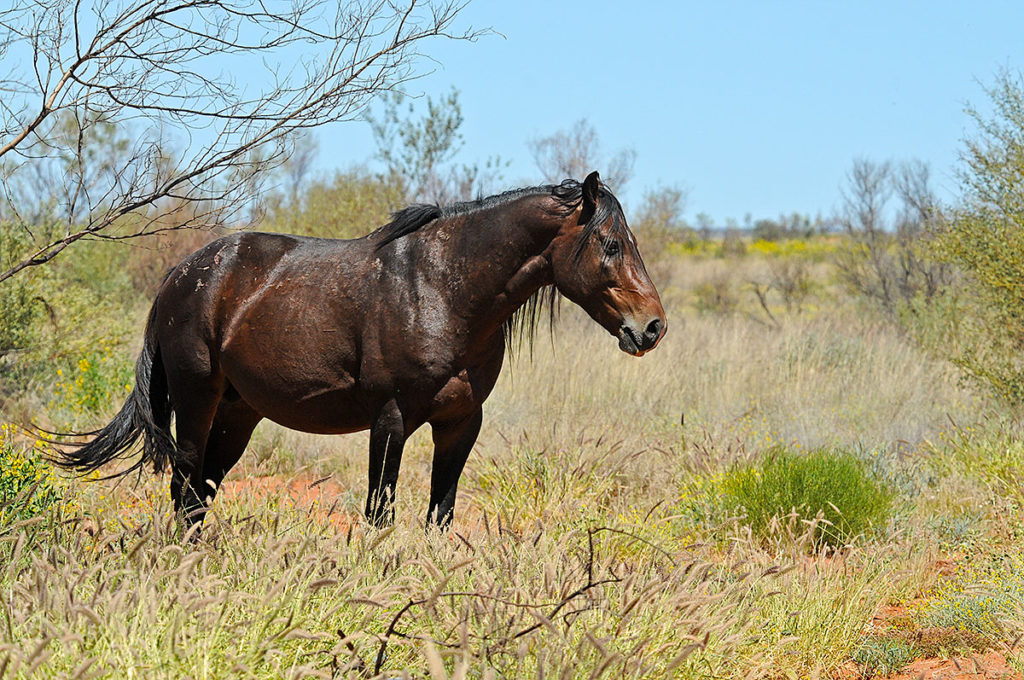
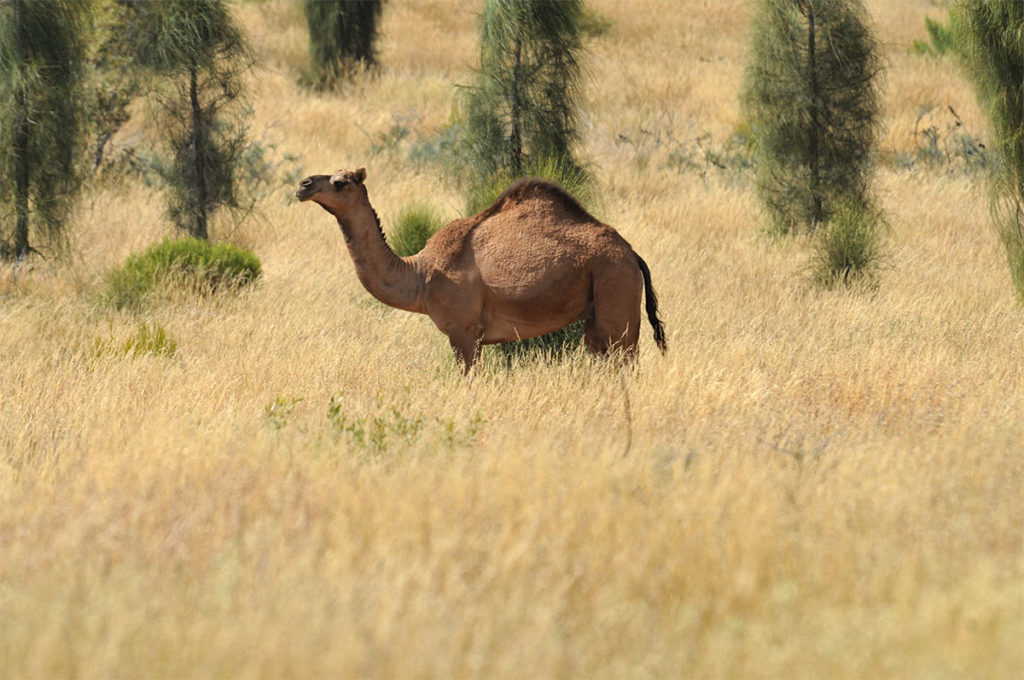
Reptiles at Uluru
Our most exciting wildlife sighting was the Thorny Devil on the way to Uluru. What an incredible animal it is! With its looks of an extraterrestrial and its ability to absorb water through its skin by simply standing in a puddle, this incredible reptile was very high on my bucket list.
Aside from an intimidating array of conical spikes that cover the top half of its body, the Thorny devil is endowed with a false head on the back of its neck. The lizard presents its fake head to the potential predators by dipping its real head when sensing danger. The bite on the squashy false head is unlikely to be life-threatening.
Avoiding predators is not the only challenge for the creatures of the desert, they also have to find water to survive. The Thorny devil’s ingenious solution lies in the shape of its scales, which are ridged in such a way that they direct water to its mouth. All the devil has to do is stand in the puddle or rub past dew-covered vegetation and the water will be delivered straight to its mouth.
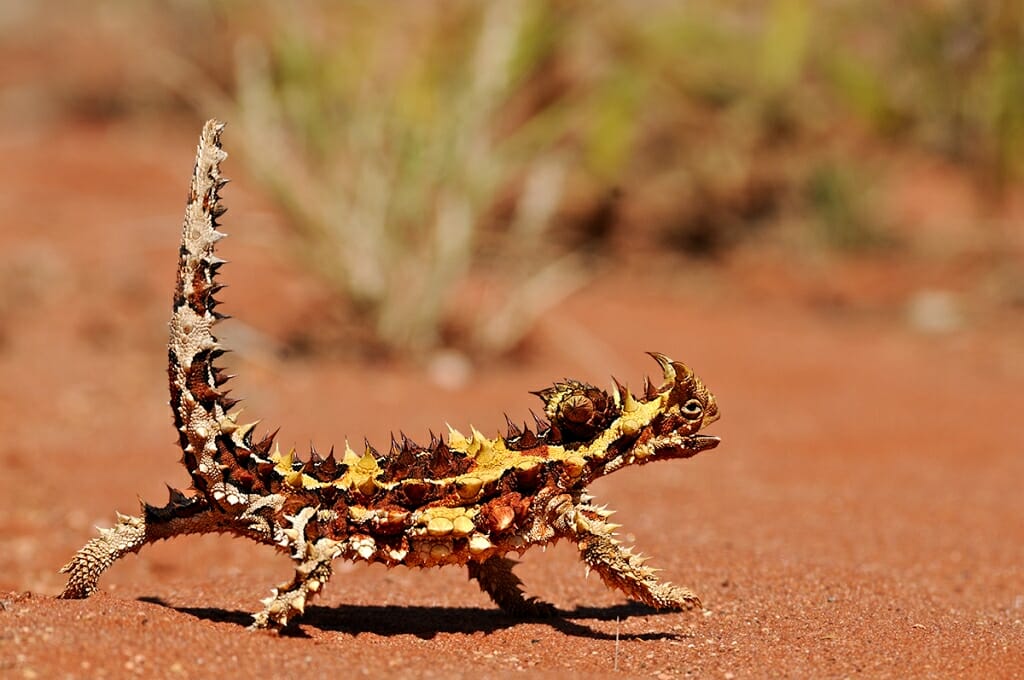
The only other reptiles I managed to see were a Long-nosed dragon at Kata Tjuta and a Tree dtella at the campsite.
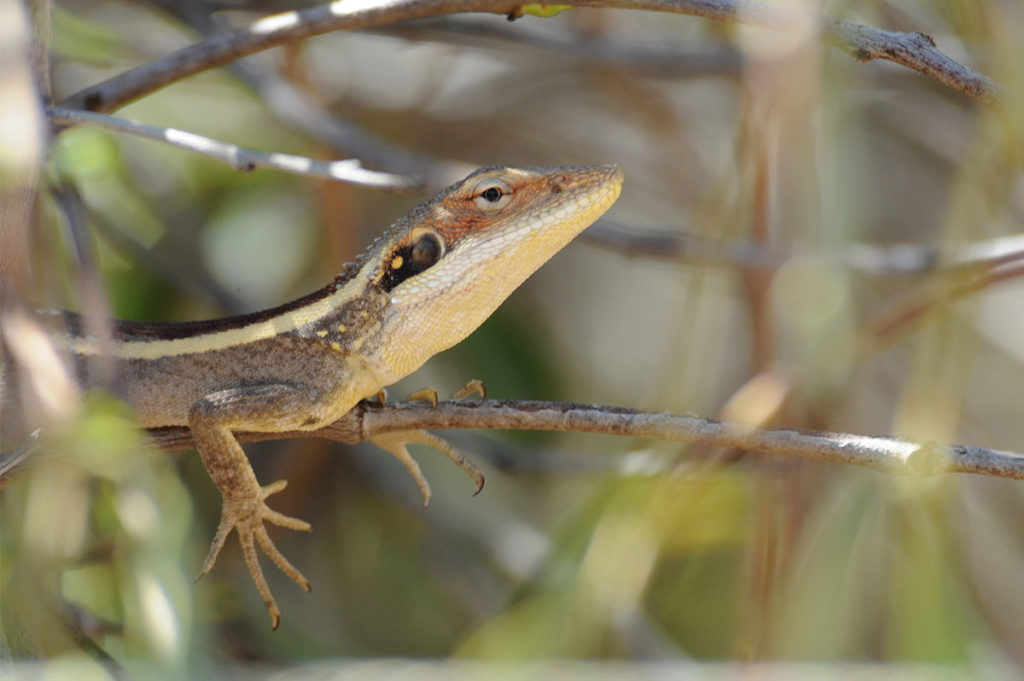
Suggested Uluru Tours
If you prefer to take this walk in the company of a professional guide, this small-group tour offers a sunrise walk around the base of Uluru.
For something different, take the Field of Light sunrise tour and combine the visit to the one of a kind art installation with a magnificent sunrise over Uluru.
Or if you are not an early riser and not much of a walker, you can opt for a sunset tour in the comfort of an air-conditioned vehicle.
And if you would like to splurge on a once in a lifetime experience, take a 25-minute scenic helicopter flight above Uluru and Kata Tjuta.
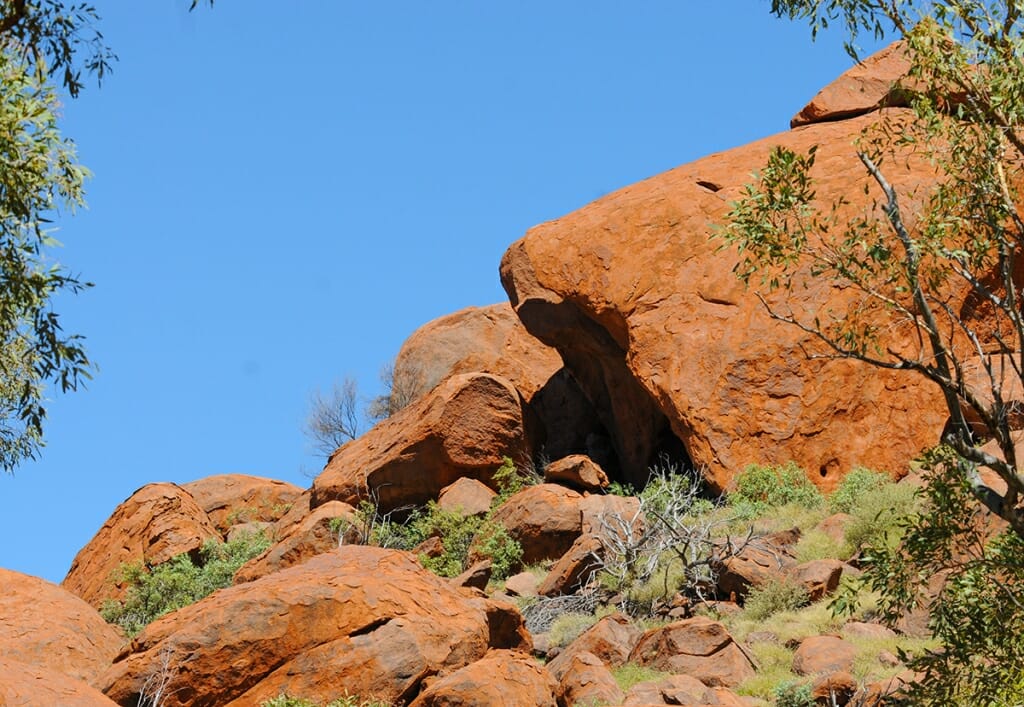
Where to see animals at Uluru
The best way to see Uluru animals is by taking a walk through this magical landscape. And there are plenty of walking trails at Uluru. The best being the 10-km long Uluru Base Walk that follows the perimeter of the rock. Apart from seeing the rock up-close, you’ll get a good chance to see some animals in Uluru.
The Uluru Base Walk
The Base Walk runs along a flat dirt path and can be completed in 3.5 hrs. Given the summertime temperatures often reach above 40 degrees Centigrade, this walk is best taken early in the morning and completed by 11 am.
If you plan to take the entire Base Walk, it is best to start at the Mala carpark, facing the rock and explore in the clockwise direction.
Alternatively, you can take shorter parts of this walk to get a taste of the landscape surrounding the famous rock. Different parts of the walk cover different environments from lush green sections and waterholes, to the vast open areas exposed to the scorching sun. Some of these exposed sections can be closed in the afternoons during summertime due to the high risk of heatstroke.
Mala Walk
The Mala Walk, named after the Rufous hare wallaby or Mala, is a lovely short and shaded walk from the Mala car park to Kantju Gorge. It is one of the cooler walks and it gives you an opportunity to see the dramatic formation of the gorge and spot some of the Uluru animals, especially around the waterhole at the end of the walk.
You can also visit the caves where the ancestor of the modern Anangu people camped and see some examples of rock art before you arrive at the Gorge.
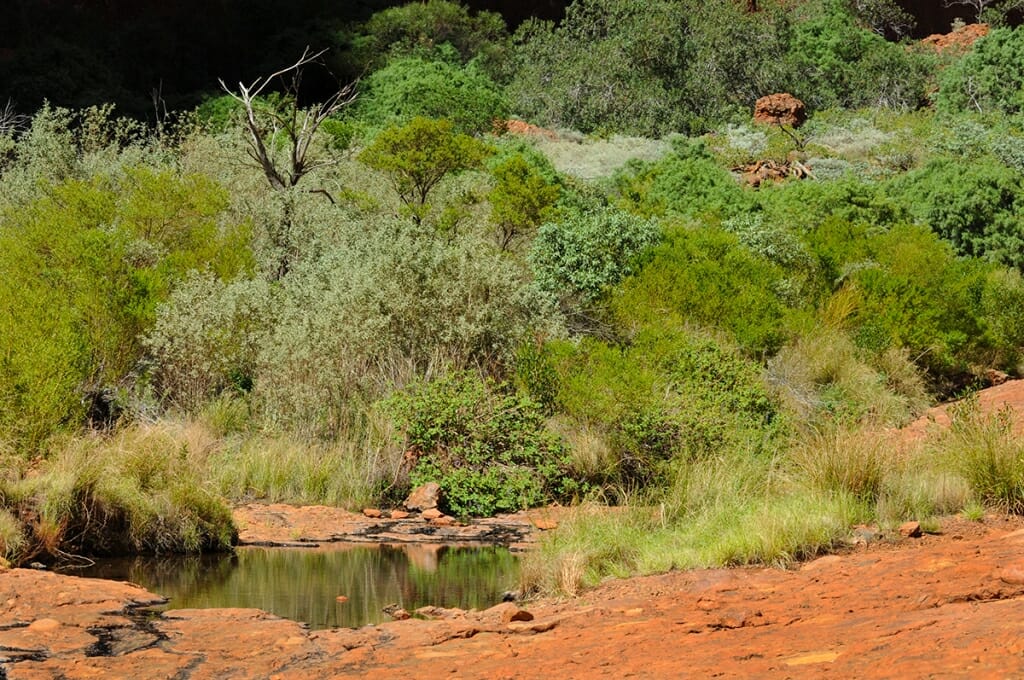
The North-east Face Walk
Running from the Kitchen Cave on the Mala walk to Kuniya Piti, this is the longest open stretch of the base walk. It covers almost half the perimeter of the rock.
This section of the walk features many unusual rock formations, that are sacred to Anangu people, who believe that these sites should only be seen in person (it is inappropriate to view images of these sites elsewhere). If you would like to photograph the sacred sites, please do so at sunset, when the low angle of the sun leaves the sites in shadow.
Make sure to bring drinking water on this walk.
Langkata Walk
Another lovely and shady section of the walk, the Langkata walk connects the Kuniya walk with the Mala carpark. The walk runs very close to the face of the rock, providing many opportunities to touch the ancient megalith and to feel its structure.
It is also one of the best areas at Uluru to do some birdwatching. Keep an eye out for Brown falcons, Peregrine falcons, Australian kestrel, Grey-headed honeyeater, black-faced woodswallow and the adorable Mistletoebird.
Kuniya walk
Running from the Kuniya carpark to the Mutitjulu waterhole, Kuniya is a short walk through some lush and shady habitat. The area around the waterhole is a good spot to see some local birds and the grassland surrounding the walk is one of the few places where you could spot the Red kangaroo.
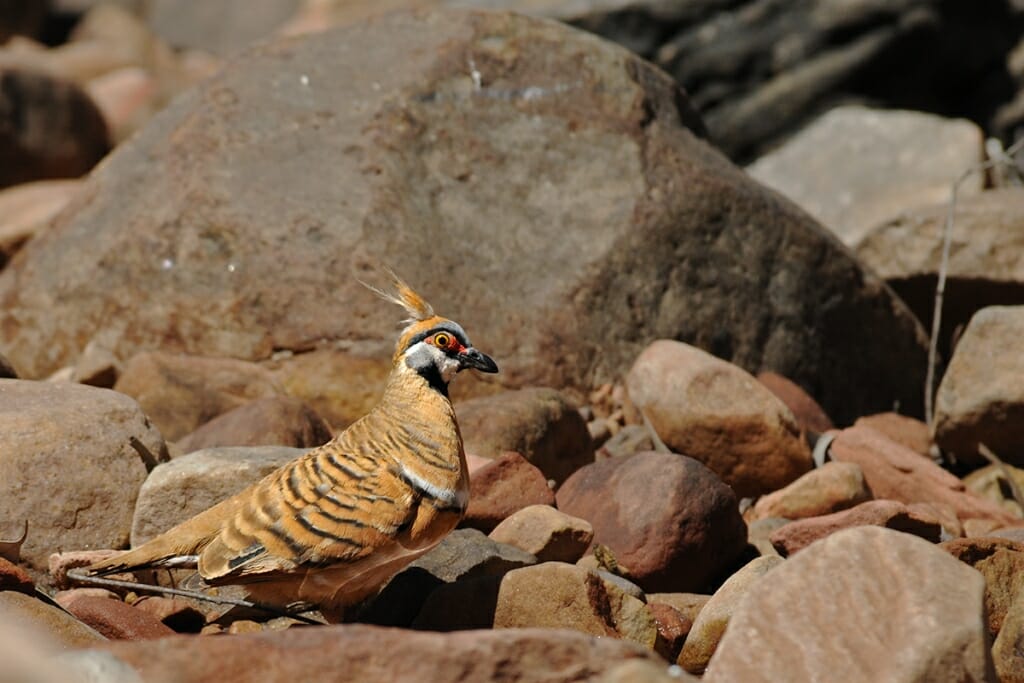
Liru Walk
Liru walk is the second-longest walk at Uluru, running for four kilometres from the Cultural Centre to the Mala carpark. It takes about 1 hour, 30 minutes and offers a great look at the native flora and fauna along the way.
The trail meanders through a mulga forest, which is another good spot to see some of Uluru birds, as well as the flowers after the rain.
There is a secret spot along the Liru walk – a large shelter that offers uninterrupted views of Uluru.
Walking trails at Kata Tjuta
About 30 kilometres from Uluru, Kata Tjuta is a group of large ancient rock formations. There are 36 domes spread over an area of about 20 kilometres.
The best way to explore Kata Tjuta is by taking an early morning walk among the domes.
Valley of the Winds Walk
The most spectacular walk at Kata Tjuta is the Valley of the Winds walk. The 7.4 circuit walk is quite steep in places, but it is worth the effort – it takes you away from the crowds to the Mars-like landscape of arid planes, towering orange domes, dry creek beds and unique Uluru fauna.
The full walk takes 3-4 hours to complete. You can fill up your water bottle about halfway along the track.
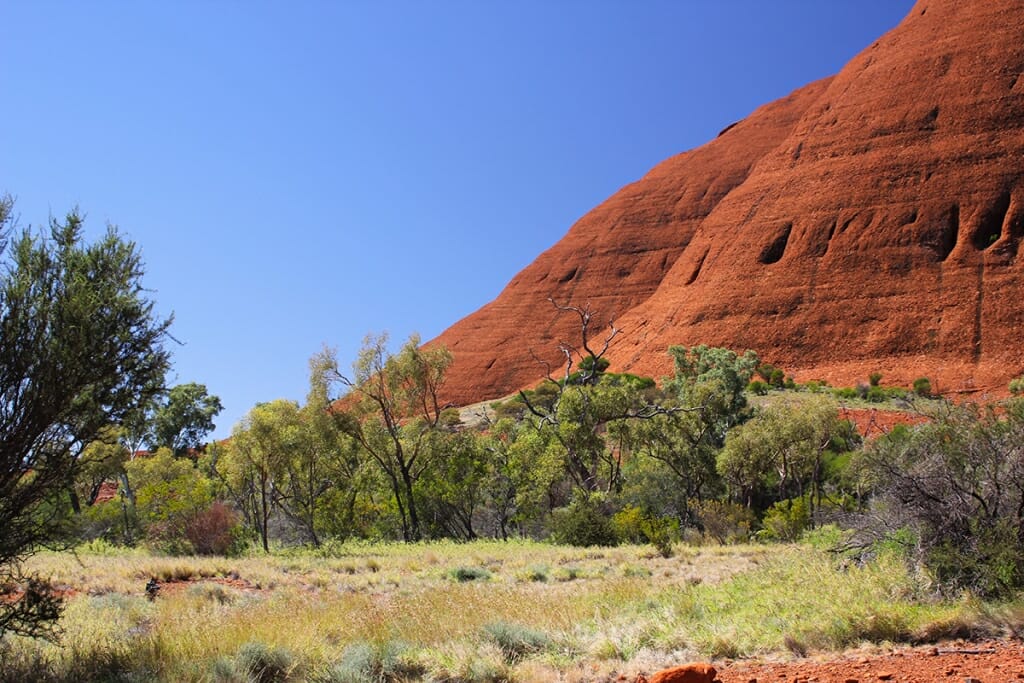
For a shorter option, you can take parts of the walk to one of the two lookouts and return the same way.
The walk to Karu lookout is 2.2 kilometres return and takes about 1 hour to complete. The views of the landscape from the lookout are jaw-droppingly beautiful.
The Karingana lookout is almost twice as far. It is a 5.4-kilometre return walk that takes about 2.5 hours to complete.
Walpa Gorge walk
The shortest walk at Kata Tjuta is the Walpa Gorge walk. But while it is quite short, it is a stunning walk. It enters the Gorge through a V-shaped opening in the monolith sandstone walls and follows the creek bed deep into the cooler and shadier world of the gorge.
This walk is a good opportunity to see some Uluru animals, from birds circling above to reptiles sunbaking on the rocks to wallabies hopping among the domes. We even spotted some tadpoles in a tiny puddle among the rocks. These must be the hardiest of all Uluru animals.
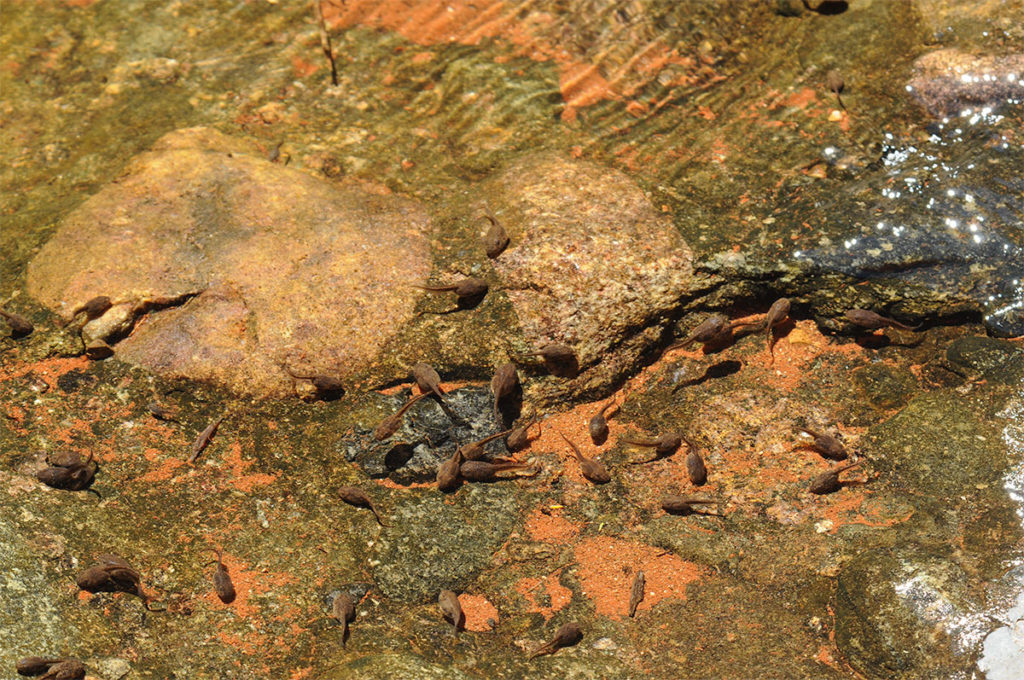
Where to stay at Uluru
We stayed at the Ayres Rock Campground that has a refreshingly cool swimming pool. But there are many options for accommodation at Uluru. My friend put together this handy guide on how to choose your accommodation at Uluru – it covers all the options!
More Northern Territory nature adventures
- Karlu Karlu / Devils Marbles Conservation Reserve
- Things to Do in Darwin and Beyond for Nature Enthusiasts
- Fogg Dam Conservation Reserve – An Underrated Gem Near Darwin
- Adelaide to Darwin Road Trip: Ultimate Wildlife Safari in the Australian Outback
- Spotting Australian Desert Animals in the Simpson Desert
- Are Kakadu animals out to get you? Wildlife watching in Kakadu NP
- Uluru animals – Weird and wonderful creatures you can spot at Uluru
- Mary River: a Wildlife Hotspot in Northern Australia
- The stunning West MacDonnell Ranges – Northern Territory Road trip

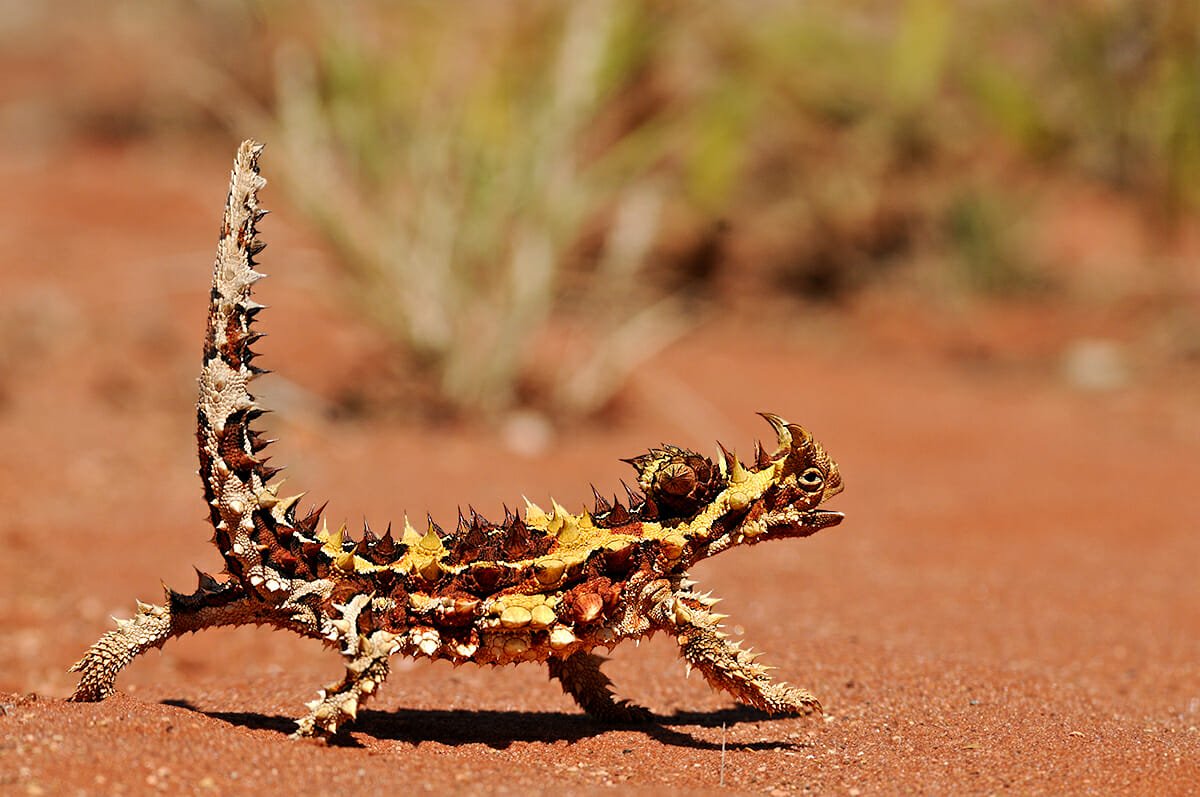
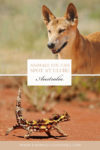
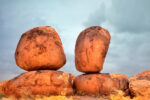
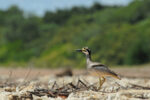
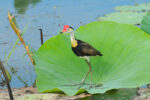
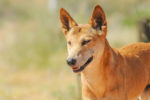
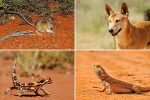
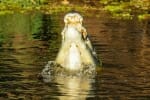
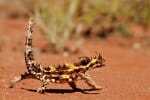
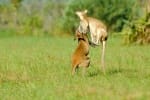
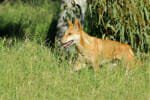
Most people have the rock first on their list. But forget to see the beauty of its wildlife. Such beauty as well, seeing these magnificent animals. Would truly visit Uluru again.
I’ve been to Australia but didn’t make it much past Sydney and the GBR. Next time I’ll have to explore a bit more!
Would love to camp there and explore! Hopefully one day if I return to Australia.
We love our weird and wonderful wildlife in Australia! Great post.
Your photos are fantastic! I love seeing wildlife, but I have to admit my photos always end up a bit blurry and rubbish! I am sooo impressed that you managed to take piccies of so many birds and reptiles! Also, that Spinifex hopping mouse is soooo cute!!
OMG that thorny devil photo is amazing! I was thinking about a trip to the red centre next time I go to Australia but I had no idea there was so much amazing wildlife.